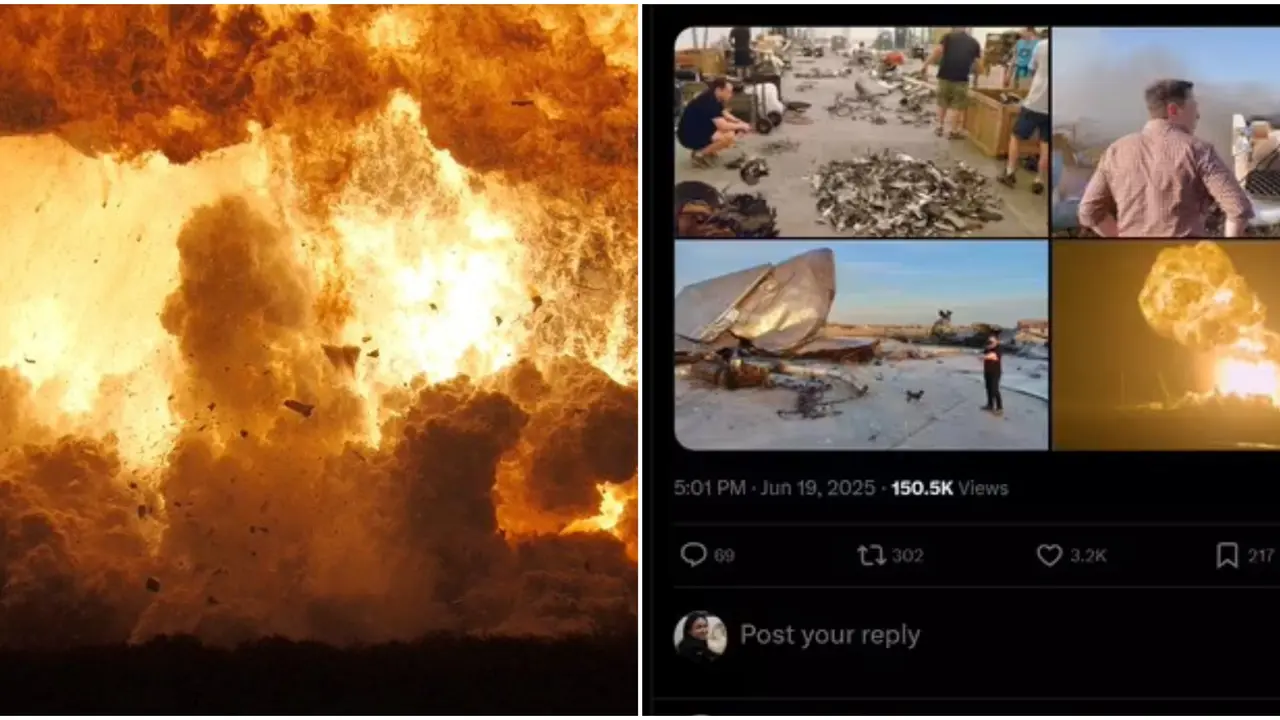Updated 21 June 2025 at 12:48 IST
Elon Musk Reacts in 3 Words After SpaceX Starship Explosion: What Did He Say?
Elon Musk responds with just 3 words after SpaceX’s Starship prototype explodes during a test in Texas. Find out what he said about the fiery incident.
- Science News
- 2 min read

A prototype of SpaceX’s Starship rocket, designated Ship 36, exploded late Tuesday night during fueling operations at the company’s Starbase facility in Boca Chica, Texas. The powerful blast lit up the sky and sent shockwaves across the area. No injuries were reported, but the vehicle was completely destroyed.
The explosion occurred around 11 p.m. Central Time, as engineers were preparing the ship for a routine static fire test of its six Raptor engines. These tests involve briefly firing the engines while the rocket is held in place. According to SpaceX, a “major anomaly” took place during the fueling phase, which uses liquid methane and liquid oxygen.
‘Just a Scratch’, Says Elon Musk
In a post on X, Elon Musk downplayed the explosion with a three-word response: “Just a scratch.” His comment underscores SpaceX’s philosophy of learning through trial and error especially with early-stage prototypes.
Despite the fireball, SpaceX confirmed that all safety procedures were followed, a perimeter was maintained, and no staff were injured. The company, along with local officials, is now focused on securing the site and assessing the damage.
Advertisement
Setback for Starship, But Not the Mission
Ship 36 was slated for a test flight later this month, but that timeline is now uncertain. The incident is a setback for SpaceX’s Starship program, which aims to develop a fully reusable rocket capable of missions to the Moon and Mars.
This is not the first such mishap. In fact, two previous Starship tests this year ended in mid-flight explosions, prompting FAA investigations. But SpaceX insists these failures are part of the journey.
Advertisement
Mars Still on the Horizon
Despite repeated explosions, Musk remains focused on his long-term vision: using Starship to make humanity multiplanetary. Plans to send an uncrewed Starship to Mars by late 2026 remain on track, with human missions to follow in later phases. Musk has previously said that he hopes to build a fleet of 2,000 Starships to carry people and equipment to build a permanent Mars settlement.
Published By : Navya Dubey
Published On: 21 June 2025 at 12:48 IST
